Documentation
How to add a Privacy Controls and Cookie Solution to Bigcommerce
Have you built your website on Bigcommerce and need to manage cookies? We’ll show you how! Let us start by reviewing why you need a Cookie policy and cookie consent management system (CMS) and how to add iubenda’s Privacy Controls and Cookie Solution to your Bigcommerce site.
➜ Jump directly to How to add iubenda’s Privacy Controls and Cookie Solution to your Bigcommerce site.
Do I need Cookie Policy for Bigcommerce?
Yes, you do, and here’s why!
If you have EU-based users, and your website uses cookies (which it most likely does!) you need to manage cookie consents according to the ePrivacy and GDPR. This means that you’ll need to block cookie scripts and similar technologies until the user gives consent.
Also, for the consent to be considered valid, you’ll need to make certain disclosures via a cookie banner and link to a more detailed cookie policy. More details here.
💡 Need to add a Privacy policy to your Bigcommerce site? See the Bigcommerce Privacy Policy integration guide.
How to add iubenda’s Privacy Controls and Cookie Solution to Bigcommerce
💡Not sure what privacy documents you need for your Bigcommerce site? Do this quick quiz to see which laws apply to you and your business.
Once you’ve generated and customized your Privacy Controls and Cookie Solution you can follow these steps to integrate it with your Bigcommerce website:
To get started first head over to your iubenda dashboard click on [Your website] > Privacy Controls and Cookie Solution > Embed.
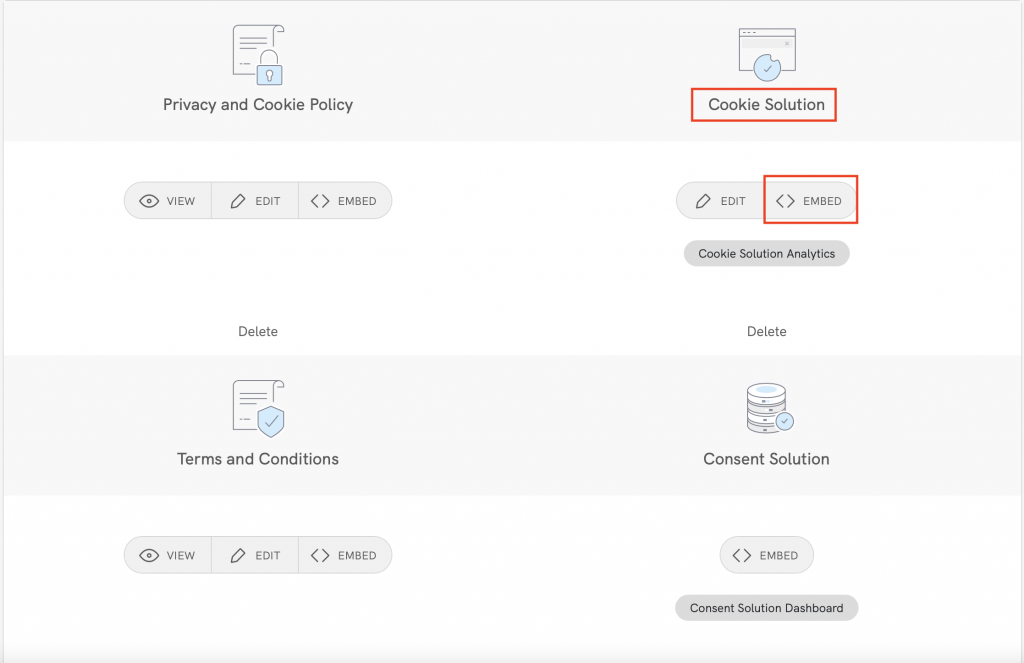
Here you can customize and then copy your Privacy Controls and Cookie Solution.
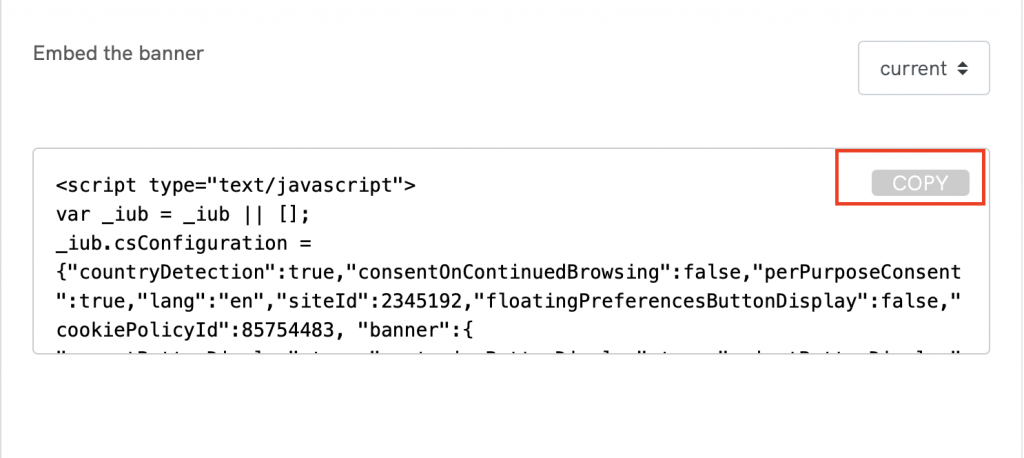
Now, open your Bigcommerce admin panel and select Storefront on the left of your screen.
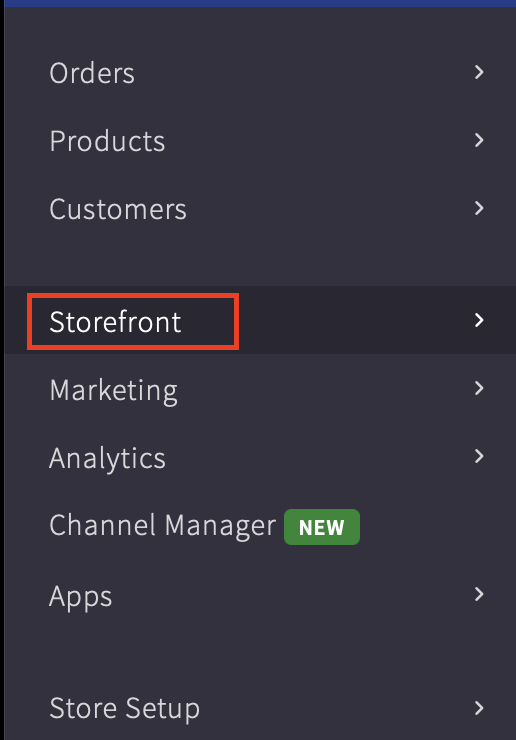
After that, a drop-down menu will appear, click on Script Manger.
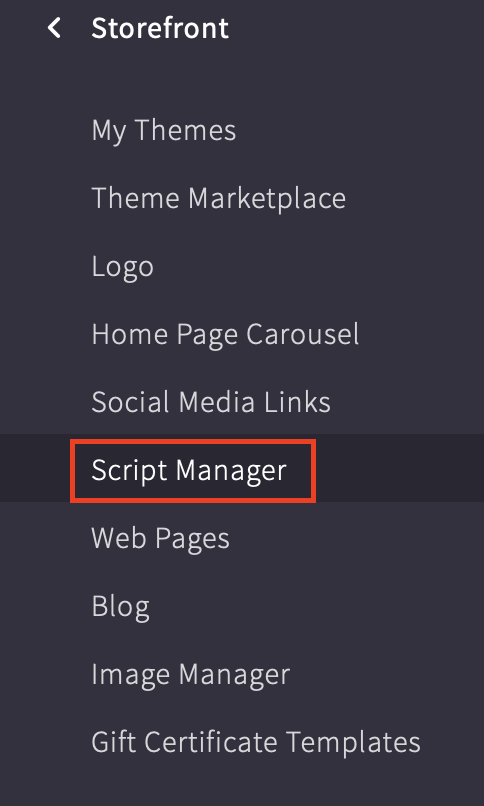
From here you can select the button Create a Script on on the right of your screen.
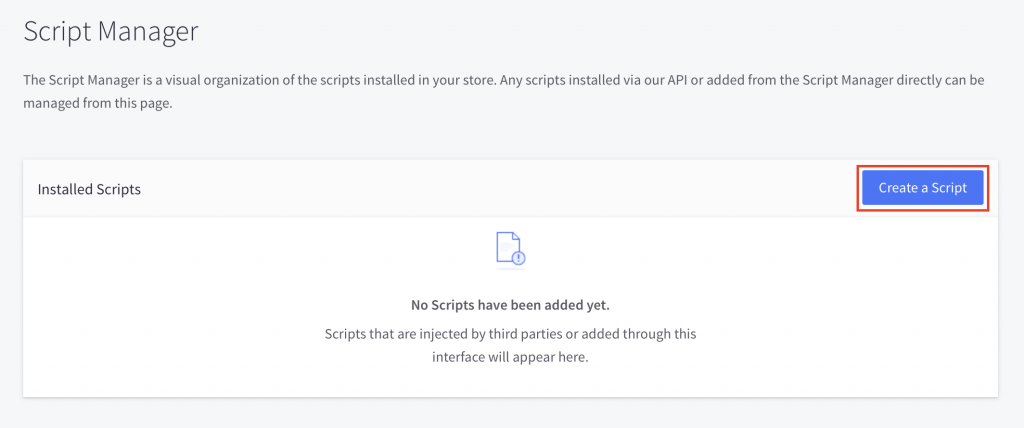
Now, you need to complete this form. Give the script a name you can use “Privacy Controls and Cookie Solution” or “iubenda” (A Script name is Required).
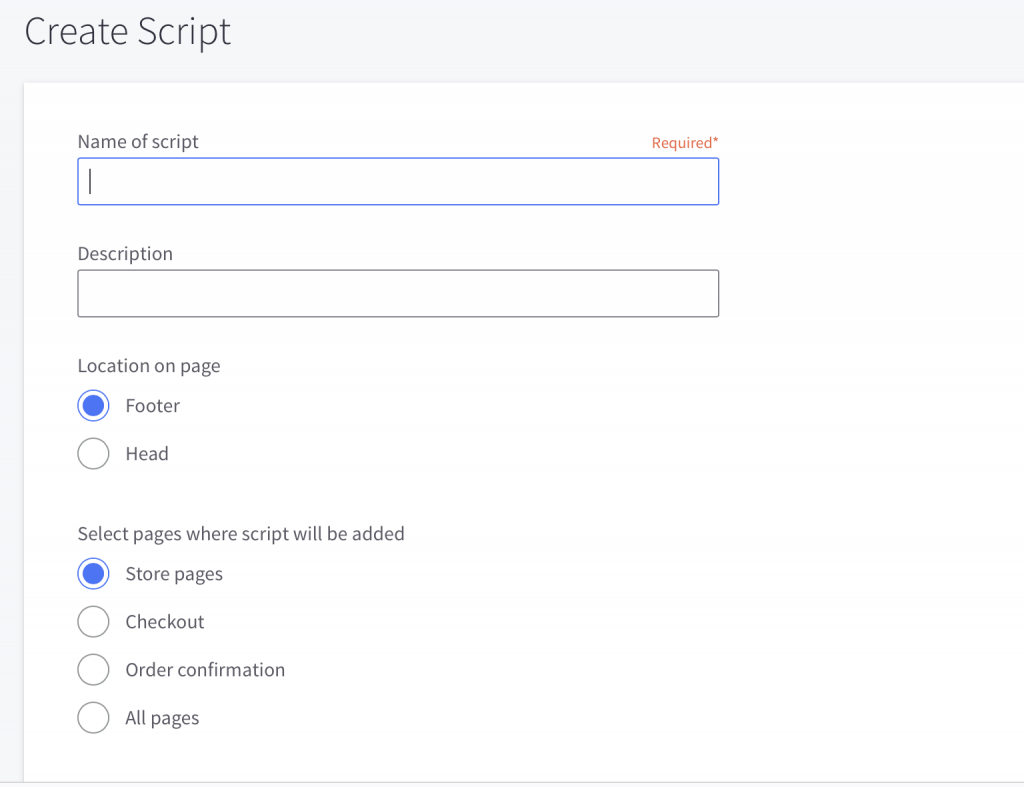
Lastly, Scroll down and select Script under ‘Script type’. Now, you can paste the code you copied from your iubenda dashboard in the Script contents box and click on save.
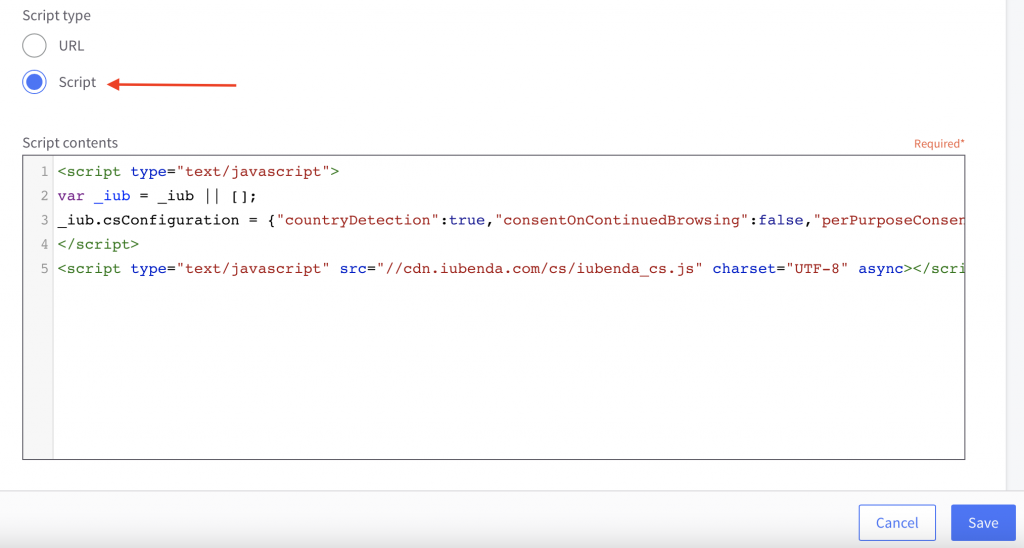
That’s it! You’ve successfully added a Cookie notice to your Bigcommerce. Here are the results of our test!

Set up prior blocking of cookie scripts
Few categories of cookies are exempt from the consent requirement. Therefore, you’ll need to block scripts from running until you get valid user consent.
How to implement prior blocking via manual tagging on your BigComerce site
Manual tagging is the method of prior-block we’ll be using for the tutorial below. You can view other methods here.
To set up prior blocking, you’ll need to make some minor changes to your site’s scripts. But it’s simple; just do the following:
- Identify the script/iframe for any additional services that are running on your website (e.g., Twitter follow button)
- Add some simple text to the HTML code (we’ll show you how below!)
- Save!
In this tutorial, we are going to block a Twitter follow button.
💡 Not sure which services you need to block? If you’re using a Cookie Policy generated by iubenda, the services listed in your Cookie Policy are most likely the ones you need to modify now.
Step 1: Identify the script
In your BigCommerce Themes panel, click Customize .
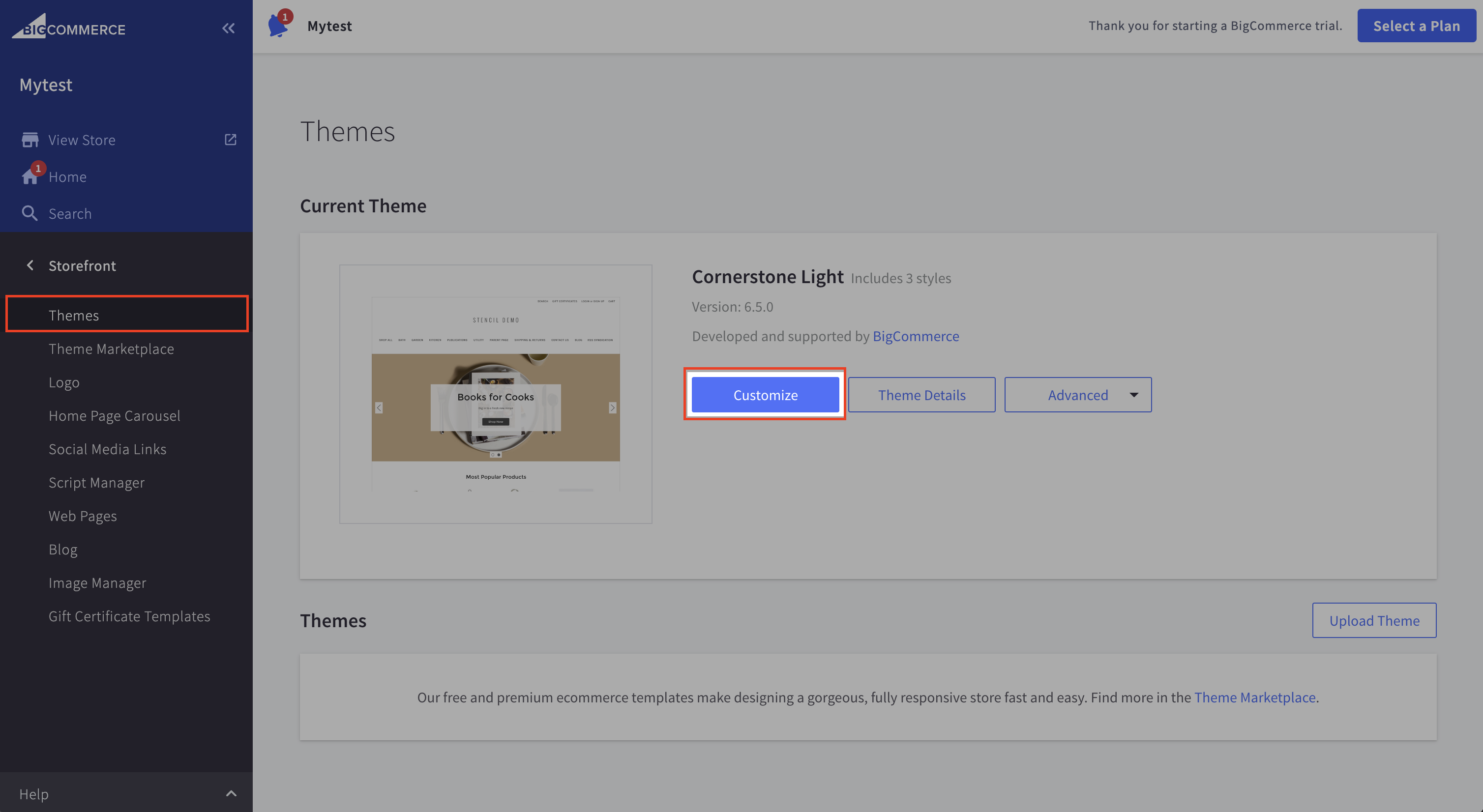
Then, in your Page Builder find the script you need to modify (simply search for the service you want to block, in this case, it is the Twitter follow button) and then click Expand HTML Editor to open the code editor.
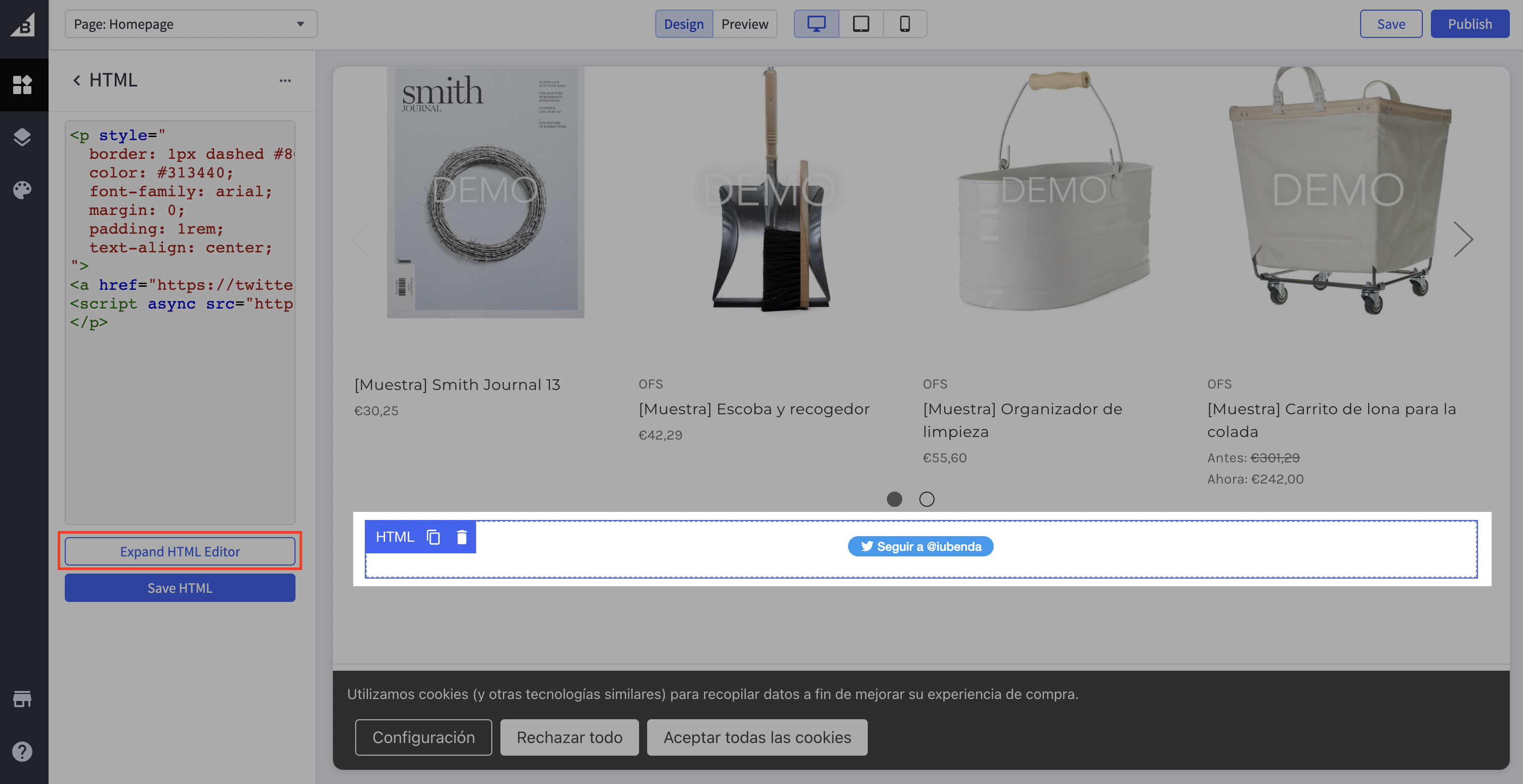
Step 2: Modify your script
- add this class:
_iub_cs_activateto the script tags, and change the “type” attribute fromtext/javascript→text/plain - replace the src with
data-suppressedsrcorsuppressedsrc - specify the categories of the scripts/iframes with a special comma-separated
data-iub-purposesattribute, e.g.data-iub-purposes="2"ordata-iub-purposes="2, 3"
More about categories and purposes
Purposes are your legal reasons for processing the particular type of user data. Different scripts on your site will fall into different categories and serve different purposes. For example, Google Analytics may be used for Measurement, while the Pinterest button may be used for Experience (Purpose 3 below). Purposes are grouped into 5 categories each with an id (1, 2, 3, 4, and 5):
- Necessary (id:
1) - Functionality (id:
2) - Experience (id:
3) - Measurement (id:
4) - Marketing (id:
5)
For even more detailed info on categories and purposes, see our guide here.
Let’s take the Twitter follow button as an example:
We need to 1. Add the class and change the “type” attribute, 2. replace the src and 3. specify the categories.
And the code structure should be like this:

<p>Twitter follow button:</p>
<!-- please note type="text/plain" class="_iub_cs_activate" data-suppressedsrc="..." (manual tagging) and data-iub-purposes="3" (per-category consent) -->
<a href="https://twitter.com/iubenda" class="twitter-follow-button" data-show-count="false">Follow @iubenda</a>
<script async type="text/plain" class="_iub_cs_activate" data-suppressedsrc="https://platform.twitter.com/widgets.js" data-iub-purposes="3" charset="utf-8"></script>Step 3: Save!
Not sure if you’ve set up correctly? Check out the live example and FAQs below
Live example
This is an example that shows everything we have described above, you can use this code pen as a guide to see what happens before and after blocking scripts via manual tagging.
To demonstrate the cookie blocking feature, we’ve embedded a YouTube video, and a Twitter follow button:
Follow @iubenda
Both scripts are blocked through manual tagging. Since both the YouTube video widget and the Twitter follow button are part of the Experience purpose (id 3) we’ve added data-iub-purposes="3" to their scripts so that the Privacy Controls and Cookie Solution can properly identify them for release.
Click on the Accept button – or just activate the “Experience” toggle – to release these scripts (refresh the page to return to the starting point).
How can I tell if I’ve set prior blocking up properly?
As you can see in the code pen example, the Youtube and Twitter scripts do not load if you do not consent. (You can test this function again by opening this link (https://codepen.io/iubenda/pen/KKKxmVO/?editors=1000) in incognito mode in your browser)
After you have saved, open your site in an incognito mode and check if the scripts you have blocked via manual tagging stay blocked until you consent.
Please refer to this dedicated article if you’d like to know how to block cookies before consent using other options available. ➔ Take a look at Google Consent Mode as an alternative to prior blocking, Google Tag Manager to Simplify the Blocking of Cookies, or the IAB Transparency & Consent Framework and how to enable it.